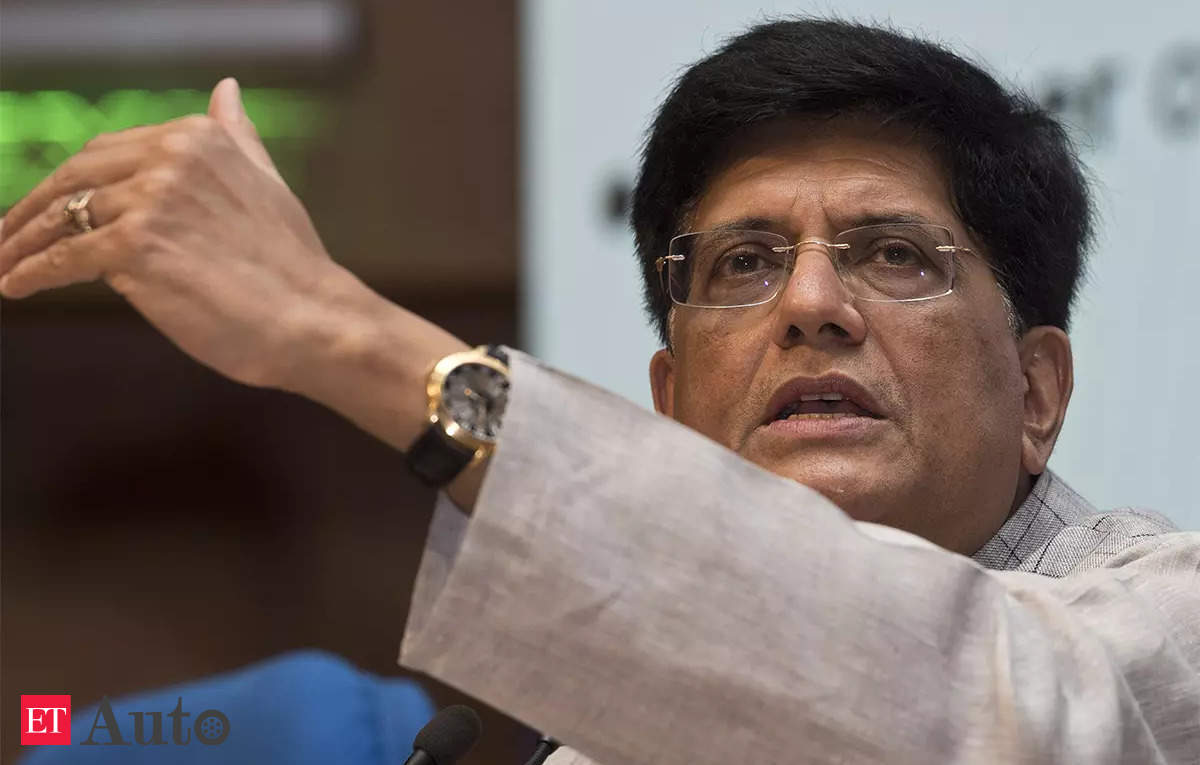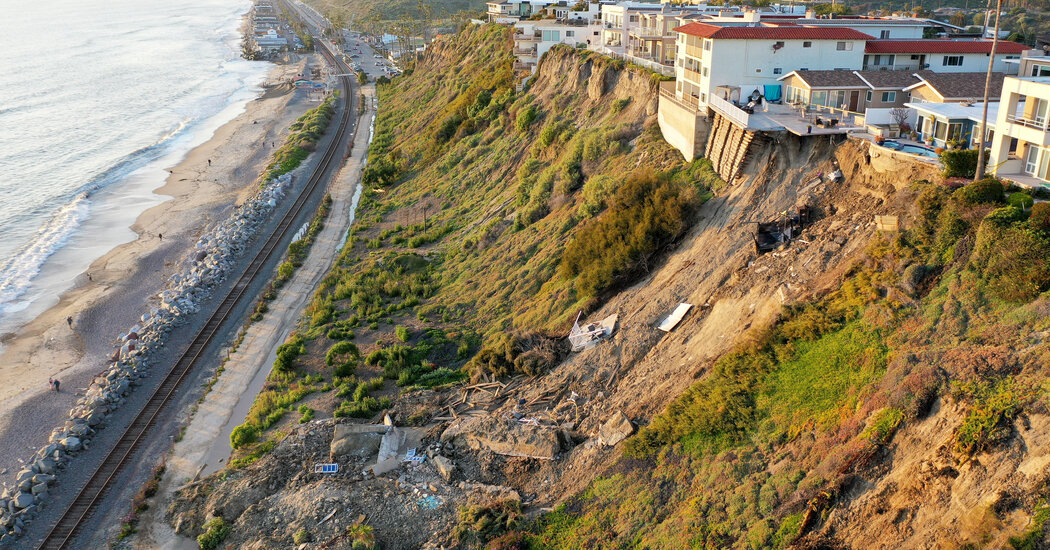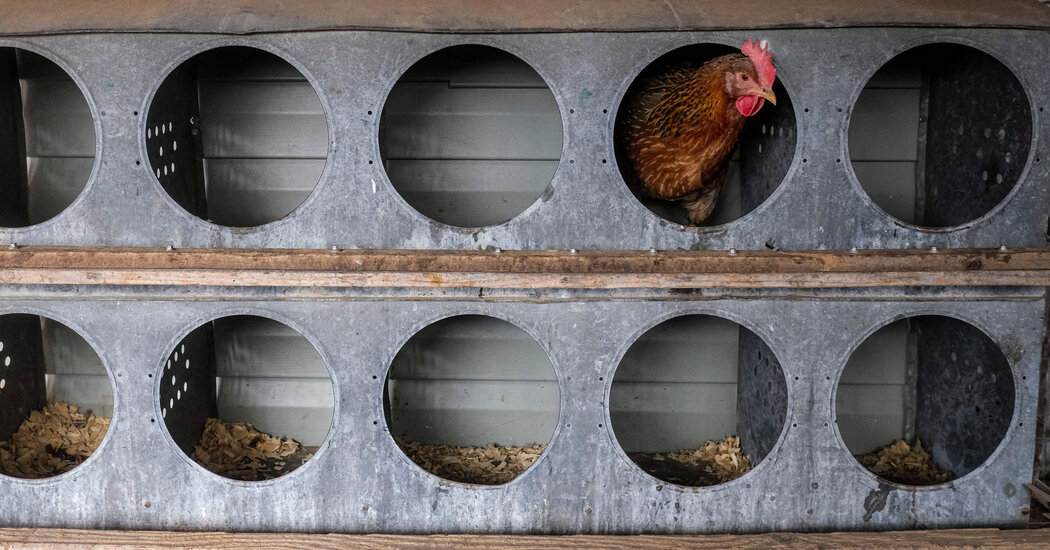This article is part of our special section on the Climate Forward event that will include policy and climate leaders from around the world.
The 351-mile LOSSAN rail corridor in Southern California, the second busiest in the United States, is under siege.
Running from San Diego to San Luis Obispo, the oceanside tracks sitting atop coastal bluffs face erosion from higher water levels in the Pacific and record rainfall. In addition, increased precipitation has destabilized terrain on the inland side, leading to landslides — like two in San Clemente recently — that have led to rail closures.
While the entire line is not impaired, there are significant hot spots where “the bluffs beneath the tracks are crumbling and the waves are crashing over the tracks because of sea-level rise,” said Catherine Blakespear, a California state senator who has conducted hearings on the rail lines and whose district is among those traversed by the tracks.
“The vulnerabilities are substantial and only getting worse” she said, affecting “riders who take the train, freight that is transported on this section and even our military readiness,” because the corridor is part of Stracnet, the acronym for the Strategic Rail Corridor Network. And if that weren’t enough, a nuclear power plant is near the tracks.
The situation in California is not unique. Climate change is challenging railroads and their infrastructure — whether for passengers or freight — worldwide.
In Europe, for example, heavy rains in Slovenia this summer resulted in the suspension of some train lines. And in Sweden, a train derailed recently when flooding washed out tracks.
High temperatures this summer also resulted in a suspension of the Amtrak-run line between Montreal and upstate New York, only months after service had resumed in the wake of the pandemic.
In countries that do not typically experience extreme heat or cold, or large amounts of rain or snow, railroads — whether private or state-owned — may be reluctant to “invest in lots of equipment or infrastructure for something that you wouldn’t expect to happen very often; they’ll just take the risk,” said Lucie Anderton, the head of sustainability for the worldwide rail trade organization UIC. “But the problem is that these pain points are coming more often.”
How governments and businesses respond to the impacts of climate change is one of the topics to be discussed by leaders in business, science and policy at The New York Times Climate Forward event on Thursday.
While abnormal temperatures and high winds cause their own problems, unusually large amounts of rain are considered the most dangerous.
“Extreme rainfall events can be fantastically destructive,” said Scott Cummings, the assistant vice president for research and innovation of MxV Rail, the research subsidiary of the American Association of Railroads.
Flooding can wash away tracks entirely or push train cars off the rails. Excessive rain can destabilize terrain, resulting in dirt or rocks on the tracks. Localized landslides can cause derailments. (While technology like a so-called slide fence, which signals trains to stop if significant debris hits the tracks, helps, it cannot prevent the damage.)
And there’s a multiplier effect, according to Kai Kornhuber, an adjunct assistant professor of climate at Columbia University. “We’re seeing an increase of different types of extreme weather events, which can happen more often in close proximity, such as heavy precipitation followed by unusually high temperatures.” The combination, he said, creates “complex climate risks.” The second occurrence, he said, often hits people and infrastructure ecosystems even harder than the first.
The problems are by no means new. A report written in 2003 delineated the many risks railroads face, including temperature swings.
Although railroad tracks are engineered to withstand the ambient temperatures of the region, Mr. Cummings said, extreme heat could result in buckling, or kinking, which could occur when the tracks in between two fixed points expanded in the heat.
“A lot of variables go into a computer model that is trying to understand how stable a track might be in resisting buckling,” he added.
But it’s not just infrastructure — engineers, conductors and maintenance workers are also exposed to the impacts of climate change.
While slowing trains can help deal with weather extremes, slowdowns translate into longer workdays for employees, said Ron Kaminkow, a locomotive engineer and the organizer for the cross-craft group of Railroad Workers United. I
In the meantime, rail operators are finding ways to bolster track resiliency, which can help prevent derailments and keep passenger and freight traffic moving.
For example, tracks typically abut rivers because the gradient of the terrain is better suited for the rails. That placement, however, puts the tracks at risk when heavy rains cause a river to overflow its banks.
To protect against that danger, rail operators may add large rocks or other solid material to fill in land that has eroded or raise the tracks, said Zak Andersen, the chief of staff and vice president for communications of BNSF Railway. Additionally, material, known as riprap, can help contain river water. In California, BNSF lifted the tracks to accommodate the unexpected refilling of Tulare Lake.
Modern tools — like satellite imaging — can help pinpoint problematic areas, Mr. Cummings said. His organization has a testing facility in Pueblo, Colo., which, by the end of the year, will include nearly 15 miles of track to explore many issues affecting railroads, including the impact of climate change (An irrigation system, for example, will measure track performance during heavy rainfall).
High winds are another significant risk because they can bring down overhead wires or lead to trees falling on the tracks or onto a passing train. Even trampolines, seemingly innocuous, become dangerous with high winds because they can become airborne, and “many find their way onto the tracks,” Ms. Anderton said.
Adding vegetation to the areas surrounding the tracks can help stabilize the land. “Plantings and a nature-based drainage system can help take water, rather than an engineered drainage system,” Ms. Anderton said. “Nature often has a better solution than using lots of concrete.”











